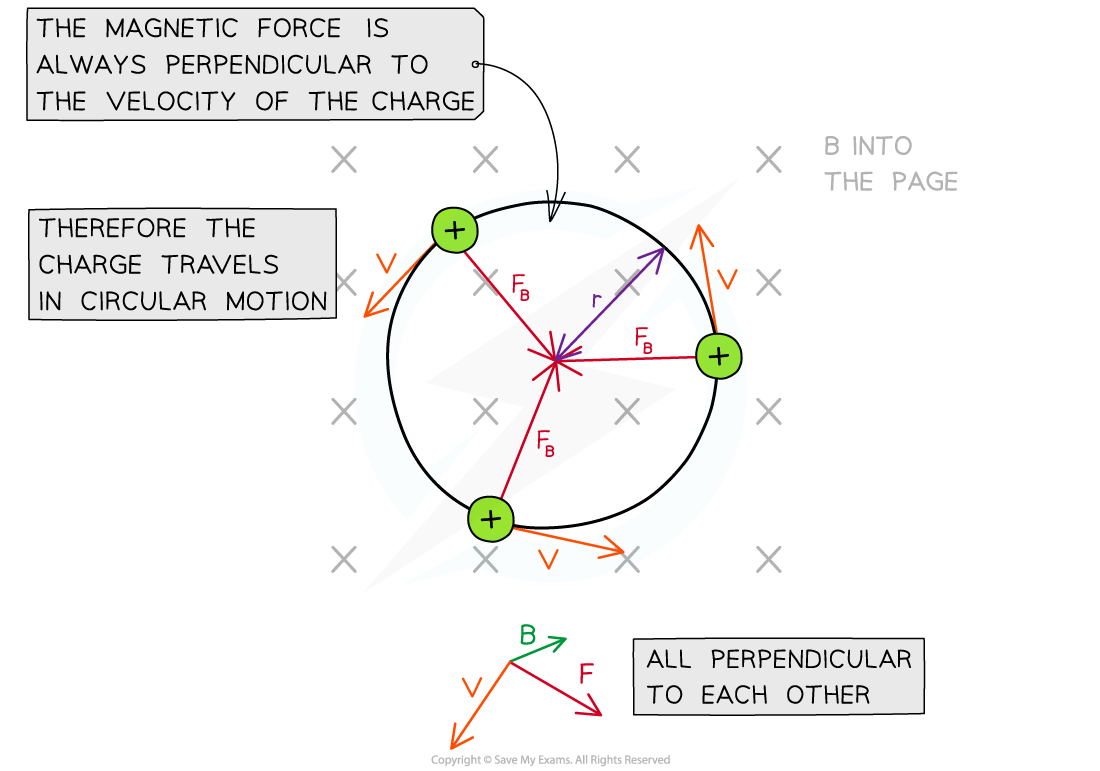Charged Particles in Magnetic Fields (DP IB Physics): Revision Note
Charged Particles in Magnetic Fields
When a charged particle enters a uniform magnetic field, it travels in a circular path
This is because the direction of the magnetic force F will always be
perpendicular to the particle's velocity v
directed towards the centre of the path, resulting in circular motion

In a magnetic field, a charged particle travels in a circular path as the force, velocity and field are all perpendicular
The magnetic force F provides the centripetal force on the particle
The equation for centripetal force is:
Equating this to the magnetic force on a moving charged particle gives the expression:
Rearranging for the radius r gives an expression for the radius of the path of a charged particle in a perpendicular magnetic field:
Where:
r = radius of the path (m)
m = mass of the particle (kg)
v = linear velocity of the particle (m s−1)
B = magnetic field strength (T)
Q = charge of the particle (C)
This equation shows that:
Faster moving particles with speed v move in larger circles (larger r):
Particles with greater mass m move in larger circles:
Particles with greater charge q move in smaller circles:
Particles moving in a strong magnetic field B move in smaller circles:
The centripetal acceleration is in the same direction as the magnetic (centripetal) force
This can be found using Newton's second law:
Worked Example
An electron travels at right angles to a uniform magnetic field of flux density 6.2 mT. The speed of the electron is 3.0 × 106 m s−1.
Calculate the radius of the circular path of the electron.
Answer:
Step 1: List the known quantities
Electron charge-to-mass ratio =
= 1.76 × 1011 C kg−1 (from formula sheet)
Magnetic flux density, B = 6.2 mT = 6.2 × 10−3 T
Speed of the electron, v = 3.0 × 106 m s−1
Step 2: Write an expression for the radius of an electron in a magnetic field
centripetal force = magnetic force
Step 3: Substitute the known values into the expression
mm
Examiner Tips and Tricks
Make sure you can derive the equation for the radius of the path of a particle travelling in a magnetic field.
As with orbits in a gravitational field, any object moving in circular motion will have a centripetal force and a centripetal acceleration. Make sure to refresh your knowledge of these equations.

Unlock more, it's free!
Did this page help you?